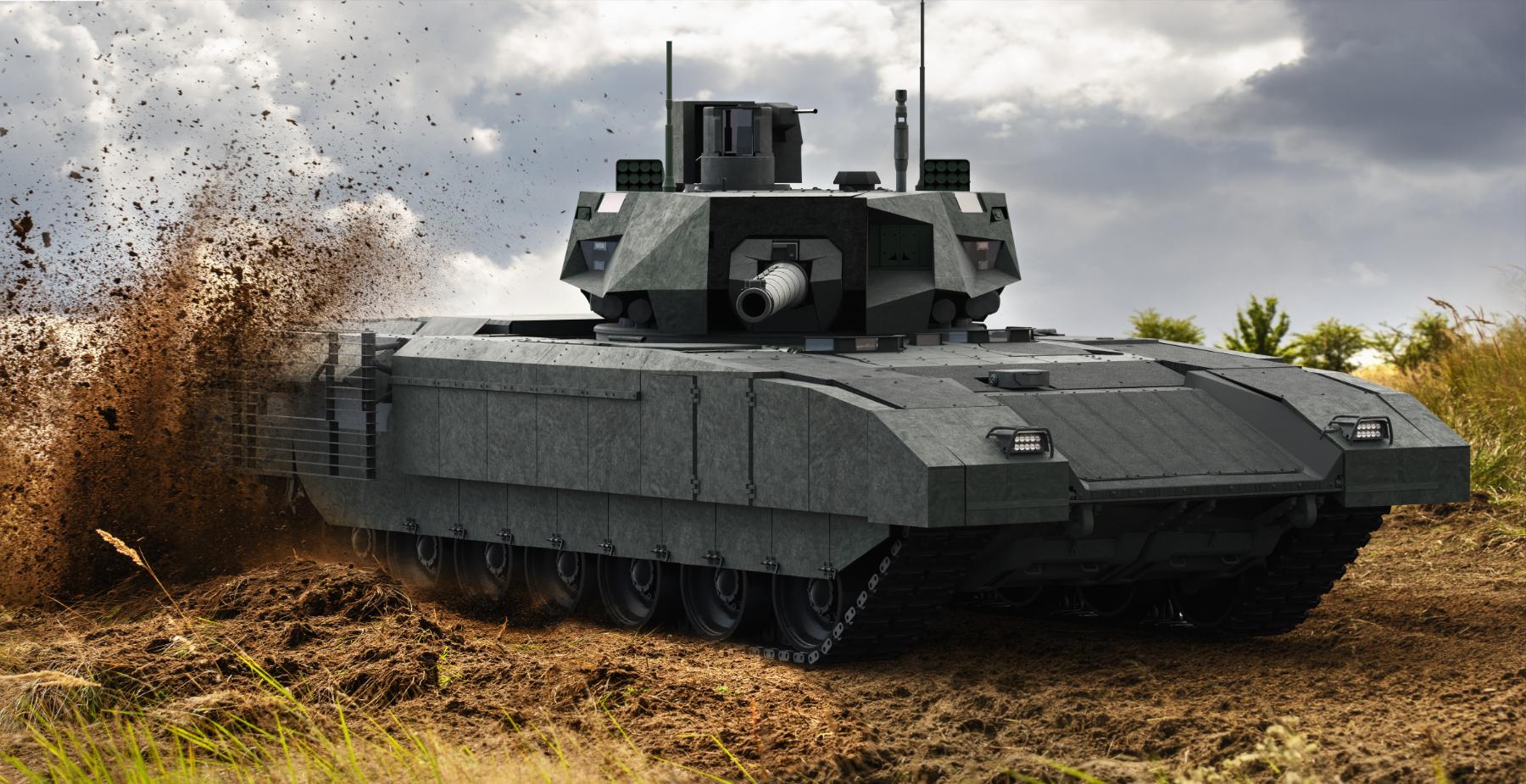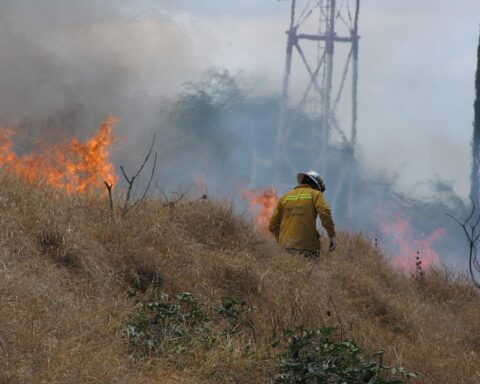UPDATE: This content has been UNLOCKED. Enjoy.
The following essay is premium content visible only to supporting members (contributing $5 or more per month) who are logged in. Consider becoming a supporting member and getting instant access to this content. If you believe that you are a supporting member, have signed in, but do not see the content, contact me for assistance at jason@greylockglass.com.
As an adult at the leading edge of Gen X, I can’t tell you how ecstatic, I mean just truly overjoyed, I was on January 3 of this year. Earth’s nuclear powers (excluding Israel, which doesn’t officially have nukes) all signed an agreement on the futility of nuclear war. The People’s Republic of China, the French Republic, the Russian Federation, the United Kingdom of Great Britain and Northern Ireland, and the United States of America wrote that they consider the avoidance of war between Nuclear-Weapon States and the reduction of strategic risks as their foremost responsibilities.
(supporting members continue reading…)
“We affirm that a nuclear war cannot be won and must never be fought.”
That was the very first line item. The biggest of bullet points for an ‘80s teen who still gets choked up over the refrain in “Russians” (sort the comments by date — it’s pretty informative about where the public’s stomach is on nuclear annihilation). Who still feels his chest tighten when I rewatch the scene where Matthew Broderick and Ally Sheedy desperately try to save the planet from the WOPR. Who was kinda disturbed by “The Day After,” but had recurring nightmares because of “Threads.”
So, a little over a month ago, uncharacteristically, I felt the stirrings of a little pride and patriotism at the thought that for once, someone here in the States was driving the bus away from the atomic cliff towards which we’ve been heading for seventy-plus years. (It’s okay to feel patriotic that your country is going to stop doing stupid shit that threatens all life on the planet, isn’t it?) It came as a shock, really, given how much President Joe Biden’s first year in office was marked by militarism, and revealed that his presidency would likely extend a hawkish consistency with his predecessors. The mainstream press really didn’t spend a lot of ink or airwaves on the document, and I guess I should have taken that as a sign not to let my optimism get the better of me.
I was even almost ready to try to explain away the fact that that in December, Congress not only replenished the Pentagon’s purse — despite the U.S. withdrawl from Afghanistan and major draw-down in Iraq — but expanded the military budget an extra $24 billion more than was requested to a staggering $778 billion (Both Senator Ed Markey and Senator Elizabeth Warren voted against the legislation, though Rep. Richie Neal, predictably, voted in favor of it). National Public Radio described the Senate vote, 88 – 11 as a “show of strong bipartisan support,” which never seems to raise eyebrows among the liberal media crowd. Legislators put on a show of fighting like cats and dogs the rest of the session, but always come hand in hand to the watering hole (feeding trough, rather) together to get the necessary work of Empire done. NPR even noted that, as if bowing to the inevitability of the ritual, “[the] annual defense policy measure, passed for the 61st year in a row, now heads to President Biden’s desk.” Like the pardoning of the Thanksgiving turkey or the White House Easter Egg Roll.
I should have known better. I really should have. The last five weeks have shown that no Peacetime Dividend would be forthcoming. American hawks are doubling down on old hatreds that have been motivating some very Cold War-esque scenarios over the last couple years. Combat scenarios, I’ll admit, to which I haven’t paid enough attention. From the Autumn 2020 joint naval exercises involving U.S., U.K., Norwegian and Danish ships off Russia’s coast in the Barents Sea that vastly amplified Western claims on the Arctic, to U.S. military exercises in Ukraine, alongside Polish and Lithuanian troops last summer, to Operation Sea Breeze, which placed 32 vessels, 40 aircraft, and 5,000 troops representing 17 NATO allies and partners in the Black Sea — essentially Russia’s backyard kiddie pool.
The list is a bit longer but you get the idea. Searching for all the ways the U.S. has poked its finger in Moscow’s eye, especially over the last year, I’m forced into the awkward position of agreeing with Ted Galen Carpenter, who, writing for the Cato Institute suggests that Washington’s recent posturing is rightfully interpreted as a “deliberate display of contempt.”
All this is not to say that Russia is any sort of a good actor, nor ignore some genuinely inflammatory maneuvers. Russian President Vladimir Putin had sent tens of thousands of troops to Ukraine’s border in April of 2021, but withdrew them, ostensibly, as a concession that would facilitate negotiations concerning, among other things, closing the door to new member states to the North Atlantic Treaty Organization (NATO). For decades, the U.S. has maintained the stance that, any nation that met the criteria for membership could apply, and no threat from a third party would undermine that nation’s self-determination. In fact, ever since President Bill Clinton welcomed Poland to NATO in 1999, Russia has felt the tightening squeeze of Western dominance, with North Macedonia, Montenegro, Albania, Croatia, Bulgaria, Estonia, Latvia, Lithuania, Romania, Slovakia, Slovenia, the Czech Republic, and Hungary all joining team Uncle Sam. At various points during the presidencies of Clinton and George W. Bush Putin intimated that if NATO were to evolve into a primarily political entity, even Russia might be interested in joining. The idea may seem absurd, given the reasons for NATO’s existence in the first place, but some critics of Clinton’s expansionist NATO aims thought the inclusion of the former lead antagonist of this century-old drama might actually quell some stubborn tensions.
Since well before last Spring, though, Russia has made no intimations that it wants to play house with the West. As reported in High North News in May of 2020, Admiral James G. Foggo III, Commander of the U.S. Naval Forces Europe and Africa, warned that Russia was making a play for the Arctic, equipping its ice-breakers with Kalibr cruise missiles. “Who puts missiles on icebreakers?” the Admiral is reported to have asked.
To any rational observer, Russia has stepped up its preparation for Belarus being a prime staging ground for an invasion of Ukraine. Suspecting this goal, the U.S. Defense Department has, for at least a decade, kept a close eye on the relationship between the two. Authoritarian leader of Belarus, Alyaksandr Lukashenka, had little respect or fondness for Russia for the first 15 or so years of his presidency, but now seems to have gotten in line with Putin’s vision for the region. The Atlantic Council reported in September of last year that Putin called Lukashenka to wish him a happy 67th birthday. In both a phone call and a telegram (Who TF sends telegrams? Is this a real thing?) on August 30, the Kremlin leader cooed to the Belarusian dictator that he “can always count on Russia’s support.” And then they celebrated their love with a romantic week of yet more martial bliss, the Zapad-2021 military exercises, which involves 12,800 troops, including 2,500 from Russia, training in Belarus.
Not to be left out of the fun of the West’s Operation Sea Breeze in the Black Sea, Newsweek reported that Russia decided to give it’s own troops some exercise with air defense and anti-ship drills overlapping NATO’s own games (can anyone say, “Excuse me, I think we reserved this conference room for 2 o’clock?”) Not to miss the opportunity to rub the West’s face in past appeasement fails, Russia staged the exercise to destroy a mock enemy surface ship in the Black Sea from Crimea, “annexed by Russia after an internationally disputed referendum held amid a political uprising in Ukraine in 2014.”
Then, in June of 2021, Great Britain endured an embarrassing incident in which one of their destroyers sailed into Russian waters on the Black Sea, according to Moscow, and may or may not have had a shot or two fired across its bow. The Russian Defense Ministry’s claims that one of its naval vessels fired warning shots at the destroyer near Crimea and that a Russian fighter jet had dropped bombs in the destroyer’s path were immediately denied by Britain. Britain claimed that it believed the Russians were simply conducting exercises, coincidentally, and that “The Royal Navy ship is conducting innocent passage through Ukrainian territorial waters in accordance with international law,” the New York Times reported Britain’s Ministry of Defense as tweeting out. Except, of course, Russia asserts that section of Ukrainian waters was annexed along with Crimea during the Obama administration.
So, not exactly a he-said/she-said situation, but with so much saber rattling over just the last few of years (not to mention sanctions, poisoned spies, murdered journalists, alleged cyber attacks and hacking, and general insults and threats, both veiled and forthright), the West’s relationship with Russia seems even less cozy than is generally discussed in the mainstream media on a daily basis. Taken as a whole, in fact, all these incidents and postures suggest that where we are right now, with 100,000 Russian troops on the Ukrainian border was a foregone conclusion. And yet, even as the United States has painted the situation as a Cuban Missile Crisis level of dire, Ukraine’s own security council chief says there’s no reason to panic.
As reported in the Russian News Agency, https://tass.com/world/1392497 Alexey Danilov, the council chief, urged, “I would like to ask you, friends, to turn down the heat. The situation we are in is absolutely clear and as of now there’s no reason for us to panic.”
The New York Times confirmed the country’s official, low-key position reporting that Ukraine’s defense minister, Oleksii Reznikov, assured allies that “Today, at this very moment, not a single strike group of the Russian armed forces has been established, which attests to the fact that tomorrow they are not going to invade.” Mr. Reznikov added, “That is why I ask you to not spread panic.”
Deutsche Welle, Germany’s international broadcaster, quoted Ukrainian President Volodymyr Zelenskyy as saying on January 27, “We don’t need this panic. It cost Ukrainians dearly.”
Indeed, despite the fact the United States, Great Britain, and Canada ordered non-essential staff of their respective embassies in Ukraine back home, neither the European Union nor the United Nations did the same for their staff in-country. It’s as if the whole affair is a choose-your-own adventure outing, where the characters, motives, story arc, and ending are all up for interpretation by individual players. Melinda Haring, reporting for The National Interest (again, I’m sourcing information from groups that make my eyeballs feel sorta grimy and itchy) describes the mood in Kiev this week as a festive atmosphere that’s “a mixture of fatalism and sangfroid.” She explains that while Zelenskyy’s administration doesn’t necessarily disagree with U.S. assessment of Putin’s goals, interpreting Russia’s strategy requires a more refined lens. Haring suggests that Russia’s first order of business is to sow unrest and instability in both Ukraine and externally. It can then take advantage of an unbalanced Ukraine and a potentially hamstrung NATO to force concessions on strategic and ballistic missiles, as well as closing the door to new NATO membership.
Biden has gone back and forth a bit on exactly how the United States is planning on responding to the build-up of troops at Ukraine’s border, currently settling on the “provide military equipment and scads of money” as well as stationing a few thousand additional troops in the region and placing many thousands more on standby. In the last week or so, the White House has released information that it claims verifies Russia’s intentions. The trouble is, officials won’t release any of the hard evidence to back up their claims. The administration went so far as to claim that Putin had a movie shot showing the Ukrainians committing war crimes against ethnic Russians, which would provide Moscow with the justification to roll tanks across the border. The Biden camp claims that by exposing the “false-flag” operation, they have effectively stolen Putin’s thunder.
The problem is, we’ve all seen that movie, and apparently a good number of Ukranians have, too. Russian-American journalist and staff writer at The New Yorker, Masha Gessen told Amy Goodman, of Democracy NOW! on February 7, “I don’t think there was a single person who didn’t use the phrase ‘wag the dog’ in describing what they were experiencing.” That’s the trouble when you have an administration staffed by 30-somethings; they honestly think that if they were too young to remember, the rest of the world must not be able to remember either.
Just such a 30-something in the person of the State Department’s Ned Price tried to sell this tale to a room full of reporters on February 3 with mixed results. Veteran Associated Press reporter Matt Lee doggedly tried to educate Price about the difference between saying something is evidence and actually producing evidence.
“You just come out and say this and expect us just to believe it without you showing a shred of evidence that it’s actually true,” Lee drilled him. Price stood his ground, saying that his coming forward and informing the press that Russia had shot, or was planning to shoot, a fake video of atrocities committed by Ukraine was, in fact, the proof of the thing itself.”Okay, well, where is it?” Lee demanded. “Where is this information?”
Exasperated, Lee, a gentleman in his mid-fifties, spat out, “I Remember WMDs in Iraq,” which may have been the inspiration for so many people on social media attempting to count exactly how many times Americans have been lied into wars, conflicts, and police actions. Price was 19 years old when George W. started laying the groundwork for toppling Saddam Hussein, so theoretically, he might have been paying attention enough to pick up a trick or two.
Problem is, there are enough hawks in the liberal corners of Washington and the media who really seem okay with a massive escalation of hostilities. Some level of conflict is just a foregone conclusion with this crowd. Whether you listen to Edward Lucas, nonresident fellow at the Center for European Policy Analysis and former editor at The Economist, when he says, “Don’t listen to Russia. NATO needs to bolster, not downsize, its flimsy defenses.” (NATO Is Dangerously Exposed in the Baltic) or Anne Applebaum, writing in The Atlantic, when she insists, “Putin is right about one thing: A free, prosperous, democratic neighbor is a threat to his autocratic regime.” (The U.S. Is Naive About Russia. Ukraine Can’t Afford to Be.)
Even Gessen, sounding weary with well-aged Russian fatalism, confided to Goodman:
“The whole western world is swirling around Russia trying to convince Vladimir Putin to step back. The danger here is that considering that Russia’s demands will never be fully met, I don’t think it’s going to get a guarantee, even though again, it will change nothing in the real state of things because it’s not going to get a complete guarantee and at a certain point, it’s going to lose the world’s attention. That’s when I think the danger point comes because the purpose of this is not, you know, again, because we know this is a pretext, the purpose is to do something else. And what is this something else? A large part of it is creating a sense among Russians that that Russia matters, that Vladimir Putin is a world leader, that that he says something and the whole world gets moving and that he can command the world’s attention. It is. It taps into feelings of resentment and and the sense of being left out in diminished that that Putin’s politics consistently tap into. And when he loses that opportunity, I think that’s that’s when it becomes really risky. So I don’t I don’t think there’s an imminent invasion, but I also don’t see how in the long term, this game of brinksmanship can end with anything but a big war.”
There are plenty of motives besides the fraying egos of old men to explain Washington’s and Moscow’s pissing contest. Actually, it’s really only money, so I guess that would be just one motive.
Award winning journalist Greg Palast offers an analysis that will make your head spin concerning the different factions in this brawl, what they want, and how anyone only coming to this subject now (like me, pretty much, admittedly) can’t begin to fathom how far back some of the dynamics go. Oil is the big driver at the moment, Palast explains, doing the math for us to show that just by putting the world on red alert, Putin has driven the price of oil through the roof, thereby creating dump trucks of money out of thin air for the Russian government, which owns a huge share of that country’s oil industry.
Certainly, U.S. oil and natural gas concerns have gotten in on the action while assuring Europe that the potentiality of Russia shutting off the energy faucet can be met handily by a steady stream of tankers crossing the Pond. And although missing from the mainstream media is just what sort of markup domestic fuel supply is experiencing, the weapons manufacturers haven’t been able to keep their enthusiasm contained. In the “Saying the Quiet Part Out Loud” department, Eli Clifton, writing for Responsible Statecraft, quotes various actors in the Military Industrial Complex expressing their optimism for ongoing destruction during quarterly earnings calls at the end of January. He reports that Raytheon CEO, Greg Hayes, said:
…[W]e are seeing, I would say, opportunities for international sales. We just have to look to last week where we saw the drone attack in the UAE, which have attacked some of their other facilities. And of course, the tensions in Eastern Europe, the tensions in the South China Sea, all of those things are putting pressure on some of the defense spending over there. So I fully expect we’re going to see some benefit from it.
There were some other doozies, but that one sums up the almost palpable exuberance coursing through the veins of these dealers of death. The excitement, of course, is stoked by members of Congress and other Beltway critters who seem to want us back on a Cold War footing. Recklessly, they are prepared to turn the tension up to 11 without any sort of a warm-up — just straight to Cuban Missile Crisis levels of animus.
Writing a letter to the editor in The Guardian on February 8, Senator Bernie Sanders attempted to advise caution:
“I am extremely concerned when I hear the familiar drumbeats in Washington, the bellicose rhetoric that gets amplified before every war, demanding that we must “show strength”, “get tough” and not engage in “appeasement”. A simplistic refusal to recognize the complex roots of the tensions in the region undermines the ability of negotiators to reach a peaceful resolution.”
Sanders is actually old enough to remember most of the Cold War’s greatest hits. Having been smeared as everything from a Kremlin tool to a garden variety commie, Sanders likely isn’t phased by new accusations of being soft on Moscow. He’d probably like to leave public office being able to say, “Hey, at least World War III didn’t happen on my watch!”
The politicians championing a muscular stance regarding Ukraine overlook the myriad opportunities that exist for a single fuck-up on either (or any) side to trigger a chain reaction that pushes both 800-pound gorillas towards an altercation that becomes very difficult to back down from. This is exactly the fear of Hans Kristensen, a nuclear weapons expert at the Federation of American Scientists. Especially concerning are the blended defensive and offensive conventional and nuclear capabilities of both superpowers. Newsweek quotes Kristensen as saying, “This integration of nuclear and non-nuclear, and the focus on ‘effects’ rather than destruction erodes the firewall between conventional and nuclear warfare and creates more pathways to escalation.”
The White House has gone to great lengths to assure the world that it has no plans to sent troops into Ukraine proper — just Poland and a bunch of other strategic locations in Russia’s front and side yards. Beyond shipping military equipment to Ukraine, Biden threatens economic sanctions such as Putin has never seen. These sanctions are likely to have about the same effect as existing sanctions have had; Russia has learned to live a little leaner yet and to become yet more independent.
Since Biden assures the world that the United States would only engage with Russian aggression if a NATO ally were to be attacked, the situation would seem stable enough in its state of entropy. Except…
Writing for the Canadian Broadcasting Corporation on January 26, Murray Brewster noted that “Canada will expand its military training mission in Ukraine and ship the embattled eastern European country non-lethal equipment to help it face down the threat of Russian invasion,” according to Prime Minister Justin Trudeau. So, even though Prime Minister Justin Trudeau said, “The solution to this tension should be diplomatic,” according to the CBC, he’s sending troops and equipment because, well, what the hell, right?
And what happens if the shooting and shelling starts while Canadian soldiers are stationed in a spontaneously combusted hot zone? What happens if our closest of NATO allies should lose any number of service members to Russian bombs or bullets? A thinking person might argue that such a tragedy would, in fact, justify striking back. And we wouldn’t have to go big with any sort of troop movement. We now have more “usable” nukes at our disposable — smaller than the ICBMs that tormented my dreams in the ‘80s, but quite a bit more destructive than the bombs dropped on Hiroshima and Nagasaki.
I won’t re-publish here what I went into detail with earlier, but to understand the threats posed to…well, all life on Earth by our “mini-nukes,” I hope you’ll read:
A matrix of deception and the rearmament of America
I’ve included a lovely map of the likely levels of carnage and destruction in Pittsfield, since the city, being home both to Raytheon and General Dynamics Mission Systems, is way, way up there on the list of targets. And though, when I wrote the piece, I laid a lot of blame for recent escalation at President Trump’s feet, it really hasn’t mattered who has occupied the Oval Office in the last seven decades. The war machine cranks out the goods, regardless.
People have stood up to the Pentagon from time to time. Both during the Vietnam War and during the first go-round in Iraq, anti-war demonstrations had measurable, if delayed, impacts on U.S. policy. The peace movement of the ’60s/‘70s retained enough of its mythos throughout the ‘80s that the domestic security apparatus labored furiously to make effective civil disobedience and chaotic, peaceful insurgency extremely difficult. The Patriot Act, written in large part by then Senator Joe Biden (by his own proud admission) revealed quite a bit about how the intelligence agencies planned to keep an eye on persons of interest here at home. Let’s not forget that the spooks wanted our fucking LIBRARY records.
And then, of course, when Ed Snowden dropped the dime on the NSA, we learned that, as bad as the Patriot Act was, the real total information awareness threat was so ubiquitous as to seem inescapable. Admittedly, it’s unsettling to think about engaging in acts of civil disobedience when you know that they know what you’re going to do, where you’re going to do it, and with whom before even you have all the details sorted out.
Is this why the peace movement has shriveled away to impotence? Fear? That’s the most illogical reason not to protest and raise hell. The truth is that they have always known, since the time of the first autocrats, who the troublemakers are. Who the loudmouths are. And that’s why it’s so important to get even louder. No one should be more afraid of Big Brother than they are of nuclear missiles raining down on the Berkshires. Even if the U.S. and Russia hold to their agreement NOT to use nukes, where does that leave us? Looking down the barrel of a land war? Though none of us are old enough to remember, we’ve already sent our sons to die in the trenches of Ukraine and Poland and Belarus in the modern age. We can’t repeat that waking nightmare.
We also can’t repeat the error of using the sons and daughters of other nations as fodder in proxy wars that enrich the MIC, proportionate to the destruction of whole societies on both sides of the conflicts. Most Americans, hell, most members of Congress couldn’t find Moldova on a map — why are we allowing corporate interests to jeopardize the security of this famously neutral country and its neighbors?
The complicity of most of the media in the U.S. military escalation over Ukraine MUST be answered by a vigorous anti-war response. Those of us who lived through the frantic arms race of the ’70s and ’80s, those of us who had our childhoods marred by Civil Defense drills in school, must lead the charge. I, personally, will not live through the fear of mutually assured destruction again. I won’t let me children live through it. While I do not identify as a pacifist, I am a staunch anti-imperialist and anti-militarist. As such, I cannot abide the productive capacity of this nation and its people to be used as an ATM for the oligarchs who would risk the planet (let’s not even get into the climate costs of wartime mobilization right now) for another couple decades of self-serving global economic manipulation and greasy opulence.
The Greylock Glass, therefore, humbly follows in the footsteps of the brave and the brash alternative news organizations that came before in condemning this looming war and all wars of aggression or conquest. We will attempt to spread this message far and wide, and hope that our coverage in the coming months serves to shed light on the truth that most Americans, even as we respect the service and sacrifice of the men and women in uniform, do not, in fact, support even the possibility of war in Ukraine. The latest polls do give me hope — either societal evolution or just plain laziness is proving more powerful than the steady drip of propaganda into our veins through our eyes and ears. The Glass will create opportunities to make our readers voices heard regularly. I hope you’ll join me in lifting your voice in a resounding “NO” to this madness.
















